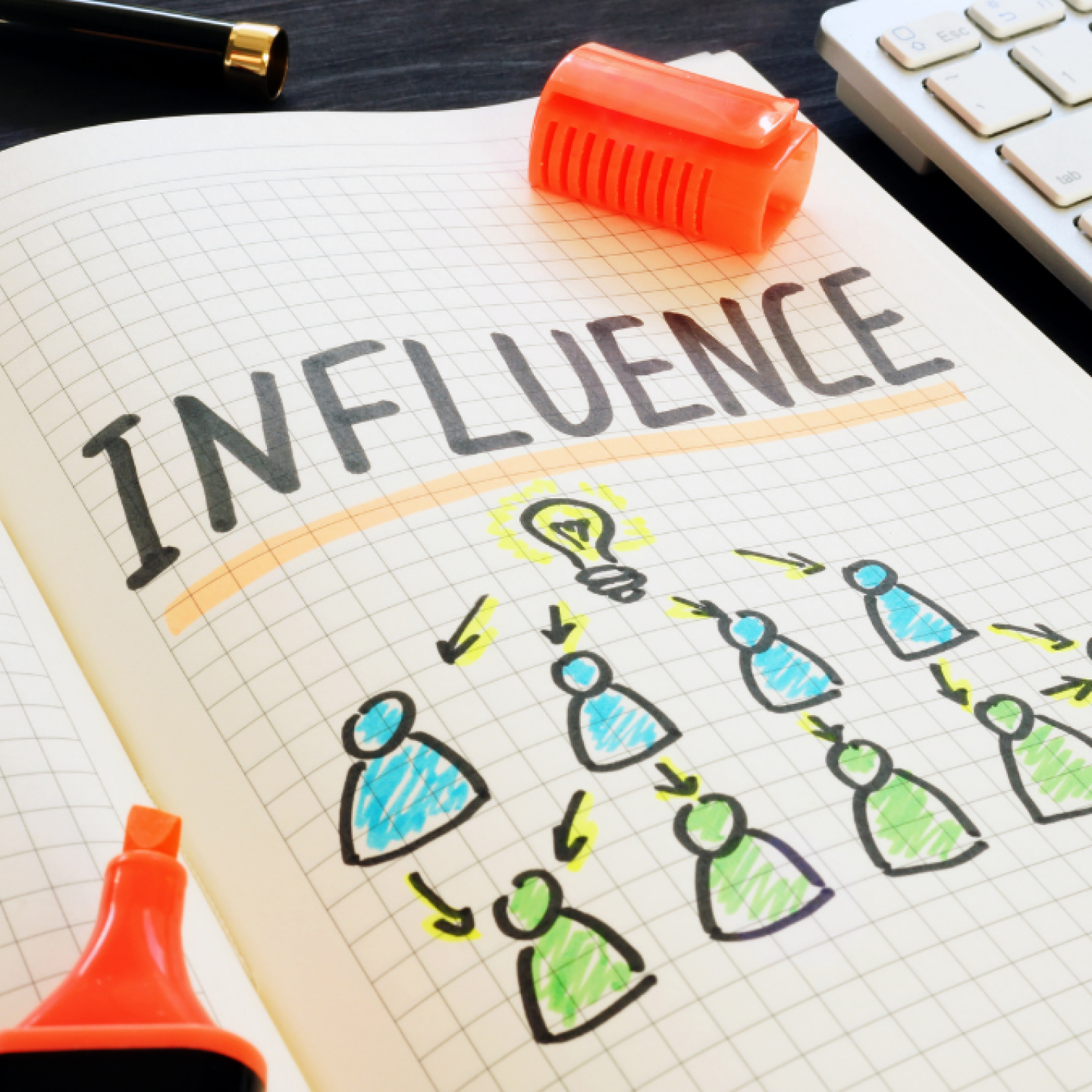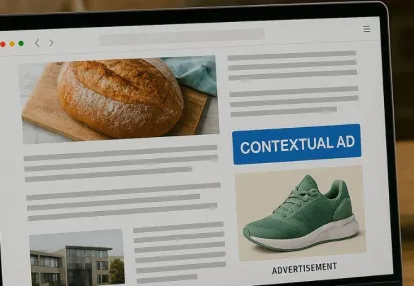
Our spy tools monitor millions of native ads from over 60+ countries and thousands of publishers.
Get StartedInfluencer marketing has become a cornerstone of modern advertising, reshaping digital marketing strategies. Influencers, with their vast and engaged followings, play a crucial role in promoting brands authentically and effectively. This shift towards influencer-driven campaigns underscores the evolving landscape of digital marketing.
Native advertising refers to paid advertisements that blend seamlessly with the surrounding content, making them less intrusive and more appealing to consumers. Key components include:
Influencers enhance native ads by integrating promotional content naturally into their posts, fostering higher engagement and trust among audiences. This synergy not only increases consumer interaction but also strengthens brand loyalty through authentic connections.
Native advertising refers to paid advertisements that blend seamlessly with the surrounding content, creating a non-disruptive user experience. These ads match the look, feel, and function of the media format in which they appear. Key characteristics include:
Traditional advertising often includes flashy banners, pop-ups, or pre-roll videos that can be intrusive and easily ignored by users. Native ads, on the other hand:
Native advertising offers various advantages for brands aiming to reach their target audience effectively:
Brands leveraging native advertising can create a more engaging and trustworthy promotional experience for their audience, ultimately driving better results. To further enhance these results, understanding advanced techniques such as header bidding can be essential for maximizing ad revenue.
Influencer marketing strategies often depend on choosing the right type of digital influencers to promote brand messages. Different influencers have different levels of reach, engagement, and authenticity, which can affect how effective native ads are.
Nano-influencers typically have 1,000 to 10,000 followers. Despite their smaller audience, their engagement rates are generally high due to strong personal connections with their followers.
Characteristics:
Example: A local fitness brand might collaborate with a nano-influencer who is a fitness enthusiast to promote its new line of gym apparel. The influencer's genuine enthusiasm for fitness translates into higher trust and engagement from their audience.
Micro-influencers hold between 10,000 to 100,000 followers. They strike a balance between reach and engagement. These social media stars often focus on specific niches such as beauty, travel, or technology.
Characteristics:
Example: Skincare brands frequently partner with micro-influencers who specialize in beauty tutorials. A campaign where a micro-influencer demonstrates a skincare routine using the brand's products can drive significant engagement and sales.
Macro-influencers boast 100,000 to 1 million followers. Their broad reach makes them suitable for large-scale campaigns aimed at generating widespread awareness.
Characteristics:
Example: An electronics company launching a new smartphone could collaborate with a well-known tech reviewer on YouTube. This collaboration provides detailed product insights while reaching a vast audience.
Mega-influencers have over 1 million followers and often include celebrities or public figures. Their expansive reach helps brands achieve maximum visibility quickly.
Characteristics:
Example: Daniel Wellington's partnership with Kendall Jenner exemplifies effective use of mega-influencers. Her posts featuring the brand’s watches seamlessly blend promotional content with her lifestyle imagery, driving both awareness and sales.
These campaigns show how different types of influencers in native advertising can effectively drive results by using their unique strengths.
Digital influencers play a crucial role in making native ads more effective. They do this by adding a personal touch and building trust with consumers. When influencers include promotional content in their regular posts, it creates a smooth experience that connects better with their audience.
Traditional promotional methods often struggle to achieve high engagement rates. Influencers, especially nano-influencers and micro-influencers, can significantly boost these metrics. Their close-knit communities tend to interact more with content, leading to higher likes, comments, and shares.
Authenticity is crucial in driving positive consumer responses towards influencer-driven native content. Unlike traditional advertisements that might come off as impersonal, social media stars and other content creators forge genuine connections with their followers. This relationship enhances the perceived authenticity of the advertised product or service.
"When an influencer genuinely believes in a product, their endorsement feels more like a recommendation from a friend rather than a sales pitch."
Transparency is essential for maintaining trust. Clear disclosures about sponsorships ensure that audiences are aware of the commercial nature of the content without feeling deceived. This transparency further strengthens the bond between the influencer and their followers.
By leveraging influencers' unique voices and styles, brands can craft personalized marketing messages that feel less intrusive. This personal touch not only makes ads more engaging but also aligns them closely with the influencer's usual content, making them more palatable to followers.
Incorporating influencers into native advertising strategies allows brands to tap into an authentic form of promotion that resonates well with modern consumers.
Looking at successful partnerships between brands and influencers shows how important digital influencers are in today's marketing campaigns. One great example is the collaboration between Daniel Wellington and Kendall Jenner. This partnership effectively combined promotional messages with organic content, demonstrating how influencers can make native ads more effective by adding a personal touch and building trust with consumers.
By examining these examples, brands can gain a better understanding of how to create influencer marketing strategies that resonate with audiences on a deeper level, ultimately driving engagement and conversions through well-executed native advertising campaigns.
Influencers in native advertising offer numerous benefits, but several challenges and criticisms persist. One significant issue is the credibility of digital influencers. As influencers engage in more sponsored content, audiences may grow skeptical of their authenticity. This skepticism can be particularly acute when influencers' promotional messages appear overly integrated into their organic content, potentially compromising trust.
Key concerns include:
To mitigate these issues, adhering to regulatory guidelines is essential. The Federal Trade Commission (FTC) mandates clear disclosure of sponsored content to maintain transparency and trust among consumers.
Regulatory Guidelines Importance:
While nano-influencers often face fewer credibility issues due to their smaller, more engaged follower base, they are not exempt from these challenges. Ensuring all influencers adhere to ethical standards is crucial for preserving the integrity of native advertising campaigns.
By focusing on these strategies, brands can leverage digital influencers to enhance their native advertising efforts, adding a personal touch that fosters consumer trust and drives engagement.
To determine how successful influencer-driven native advertising campaigns are, it's important to understand specific metrics. These key performance indicators (KPIs) provide insights into how far the campaign reaches, how engaged the audience is, and how well it aligns with brand goals.
Various tools can help brands measure these metrics effectively:
The importance of influencers in today's marketing campaigns cannot be emphasized enough. Digital influencers, ranging from nano-influencers to social media stars, enhance native ads by adding authenticity and building trust among consumers. Their personal touch makes promotional content more relatable and engaging.
By using these metrics and tools, brands can improve their influencer marketing strategies to increase both reach and effectiveness. This not only boosts brand awareness but also leads to measurable outcomes such as increased website traffic and sales conversions.
Brands looking to stay ahead should embrace the synergy between influencers and native advertising. This dynamic combination aligns perfectly with future trends in digital marketing, emphasizing authenticity and engagement.
Adopting this approach as part of your marketing strategy ensures you remain relevant in a rapidly evolving landscape. Leveraging influencers for native advertising not only enhances your brand's visibility but also fosters deeper connections with your target audience.
Receive top converting landing pages in your inbox every week from us.
How-To
Native ads can do more than drive clicks—they can build long-term brand loyalty. Learn how to use authentic storytelling, strategic placement, and audience targeting to strengthen trust during year-end campaigns. Discover how subtle, value-driven messaging keeps customers engaged beyond the holidays. Ideal for marketers aiming to turn seasonal buyers into loyal brand advocates.
Marcus Chen
7 minDec 15, 2025
Must Read
As third-party cookies fade away, contextual targeting is making a powerful comeback. Learn how to leverage native ads that align with user intent and content relevance to maintain high engagement and conversions. Discover modern tools and tactics that make cookie-free targeting both precise and scalable. Ideal for advertisers seeking privacy-friendly ways to drive performance in 2025 and beyond.
Liam O’Connor
7 minDec 9, 2025
Recently Updated
Native ads can make or break your holiday marketing success. Explore how to evaluate your recent campaigns and identify what worked—or what fell short—with native advertising. Learn key optimization tactics to boost engagement, strengthen audience trust, and increase conversions in future promotions. Ideal for marketers aiming to refine their ad strategies after the holiday rush.
Elena Morales
7 minDec 1, 2025




